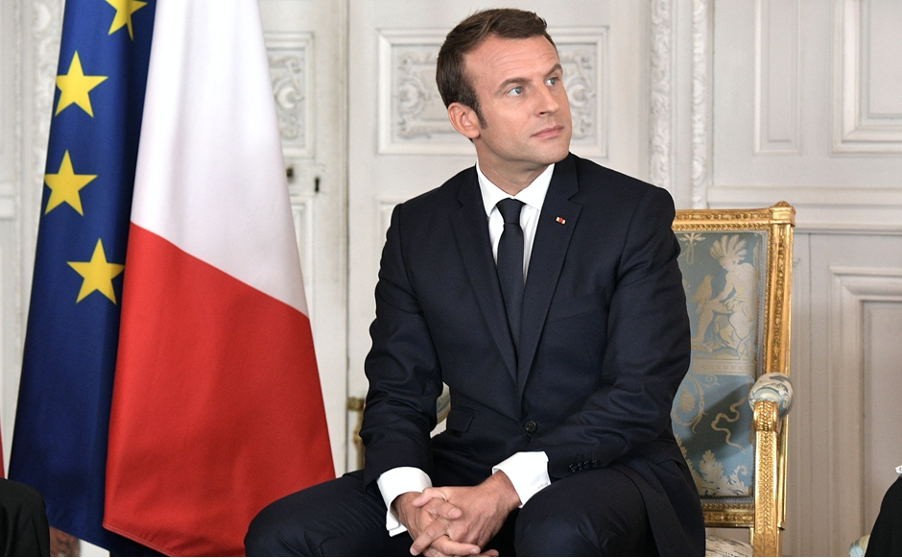
Yesterday France entered its second national lockdown, with this expected to be in place until the end of November. These new measures come as official COVID-19 cases in France surpass 1.3 million, with global coronavirus cases exceeding a staggering 45 million (as of 30th October 2020). President Macron’s decision to impose such stringent restrictions undeniably signals that a treacherous and unprecedented winter lies ahead for France, and for Europe.
But how did France get to this point?
Lockdown measures were implemented on 17th March and were originally meant to be in place for just 15 days but were extended until 11th May. These mandatory measures were a full-scale national lockdown which included only leaving homes for essential reasons – these could be for food shopping, medical appointments, essential work or an hour of daily exercise. Additionally, people were required to have a signed and dated form justifying their reasons for leaving their home each time or they risked facing a fine of €135. Some local authorities also put in place their own restrictions, such as curfews or banning access to beaches. Essentially, the message from government was to stay at home.
Official daily case levels during the national lockdown were significantly lower than the 47,637 reported in the past day, however this is to be taken with a pinch of salt I should add. As with the UK, testing was not widely accessible during the first lockdown, and with the ‘stay at home’ order in place, people were not being regularly tested and thus the figures are not accepted to be truly representative. But Figure 1 (below) depicts exactly what was feared: a spike in cases during the winter months. As you can see, there was a spike in reported cases between March and May, and a consistent decline and plateau until August, where daily confirmed cases began to exceed 1500. This is likely due to the easing of lockdown measures in May and June, in addition to increased testing capacity.
As of 30th October, there has been a reported 36,020 coronavirus related deaths in France, with 235 in the last day alone. Over 115,000 cases of coronavirus have resulted in recovery and discharge from hospital, and at present, there are over 3000 serious or critical cases of coronavirus. According to The Financial Times, France is facing the possibility of up to 100,000 cases a day as the prospect of a vaccine moves further away, and as the country delves into winter.

Figure 1: New reported cases by day in France, NYT
The Financial Times also reported in April this year that France’s ‘weakness’ in testing for the virus led to a major challenge in lifting lockdown. It discussed how Macron urgently wanted to ease restrictions in May, but that scientists wanted capacity for testing to be trebled first. In April, the capacity for testing was at 150,000 per week, but for lockdown restrictions to be lifted, Jean-François Delfraissy – chair of the scientific committee advising the government – described how the country must be at 500,000 tests per week in order to ease restrictions. By the first week of August, 500,000 tests per week were being carried out, with a claimed million by the end of the month, according to Kim Nguyen, a biologist working in a laboratory outside of Paris.

Figure 2: Outbreak evolution for the current 10 most affected countries, Johns Hopkins Coronavirus Resource Center
France has failed significantly in contact tracing, where The Connexion reports that only 2.6 million have downloaded the first version of their track and trace app, ‘StopCovid’, a clear failure in comparison to other EU states such as the UK and Germany, where such track and trace apps have been downloaded 16 million and 18 million times, respectively. When their app ‘StopCovid’ was released in late June, it did not request personal data such as a name and address, meaning that the government had little information about users of the app. This is due to the need for a balance to be struck between protecting public health and guarding the data privacy of its citizens. It also failed to win over the public due to a lack of confidence in its reliability and accuracy. A new, updated version of the app was scheduled for release on 22nd October and is expected to be more “dynamic and interactive” than the previous version.
Hospital admissions in France are increasing too, with the capital being hit the hardest. The concern here is whether its healthcare system will once more be overrun with patients, which will cause further ramifications for those who have surgeries or vital treatments scheduled.
The overall response from France has been a mixed one in terms of successes and failures. The failure to produce an effective track and trace app has led to a lack of public confidence and will likely see low numbers of interaction with this updated version. The lockdown measures in March were strict, but as with the UK, critics argue they were implemented at least a week too late. With a minimum of 36,000 coronavirus related deaths, and more than 1.3 million cases, it’s not hard to see the failings. But it must be acknowledged that this is an unprecedented pandemic. We must realise that many European countries are struggling to contain the spread and infection rate of the virus and will do for the foreseeable future.
Where are they now?
As of Friday, people are only allowed to leave their homes for essential work or medical reasons. Bars, restaurants and cafes are closed but visits to care homes are permitted – so long as social distancing measures are observed. Meetings between households are banned, and weddings are no longer allowed to take place. However, exercise for an hour a day and walks ‘near your house’ will be allowed. As was mandatory in March, people are required to fill out forms justifying their reasons for leaving their home or face fines of €135, and social gatherings are banned. Schools will remain open this time, however children aged six or over will be required to wear a mask, as Macron seeks to limit any further negative impact on the education of France’s youth.
Macron announced these new measures in a televised address, delivered on Wednesday. Faced with mounting criticism that his government’s response to the pandemic has not quelled the spread of the virus, this second national lockdown depicts a clear message – tough times are ahead. He declared that France has been “overpowered” by this second wave, which he admitted will be “more deadly than the first”, with a current daily infection rate of between 40,000-50,000, at least. This serves as a stark warning to other European countries that swift and clear measures must be implemented if we are to avoid a second disaster of deaths in the coming months.
Since the announcement, Paris saw record numbers of traffic as its citizens began to panic about the utter uncertainty that another national lockdown brings. As Macron calls for a “collective effort” to combat the spread of the virus, the future months for France look bleak.
According to Johns Hopkins University, France is the fifth worst country in terms of case numbers – behind the US, India, Brazil and Russia. The European Commission President, Ursula von der Leyen, warned that “We are deep in the second wave” and we must come to terms with the reality that this year we will have “a different Christmas”. The World Health Organisation’s European regional director, Dr. Hans Kluge, described Europe as the “epicentre” of the pandemic once more and said, “At the risk of sounding alarmist, I must express our very real concern.” It thus becomes impossible to see a way out of this pandemic when no vaccine is readily available, and case numbers continue to increase.
Doctors have warned that this second wave is more deadly than the first, primarily due to how it is spreading. This time infections are hitting parts of France at the same time, rather than region by region. If these infections continued at such a rate, Macron revealed that all of the intensive care beds would be full of COVID-19 cases by mid-November. During the first wave, non-COVID patients were moved to neighbouring regions in March and April which were less overrun. However, the hospitals in France have barely recovered, and the prospect of exponentially increasing hospital admissions puts even more pressure on France’s health system.
The ‘I’ reports that the rate of infection stands at 414.4 per 100,000 cases in the seven days leading up to 29th October, which when compared to the UK rate during the same period of 229.6 per 100,000, indicates just how deep into this second wave France truly is – and perhaps how the UK is not far behind. The UK now advises against all but essential travel to France, as the French PM also increased the national security level to ‘urgent’ following a terrorist incident on Thursday in Nice.
What the future holds for France depends on how this second lockdown and possible future ones play out. It remains to be seen.
Now, it is beginning to feel as though we will be forever stuck in a limbo of imposed restrictions which are lifted, and then imposed again once cases inevitably rise. Whilst it is easy to suggest we must ‘get on’ with our lives, when hospitalisations, infection rates and death rates increase to such an extent, we must continue to proceed with both caution and rapid action.
As for whether COVID-19 will affect the future of President Macron and his government’s grip on power, the infamous response Harold Macmillan reportedly gave when asked what he feared the most as Prime Minister springs to mind:
“Events, dear boy, events”.



Average Rating